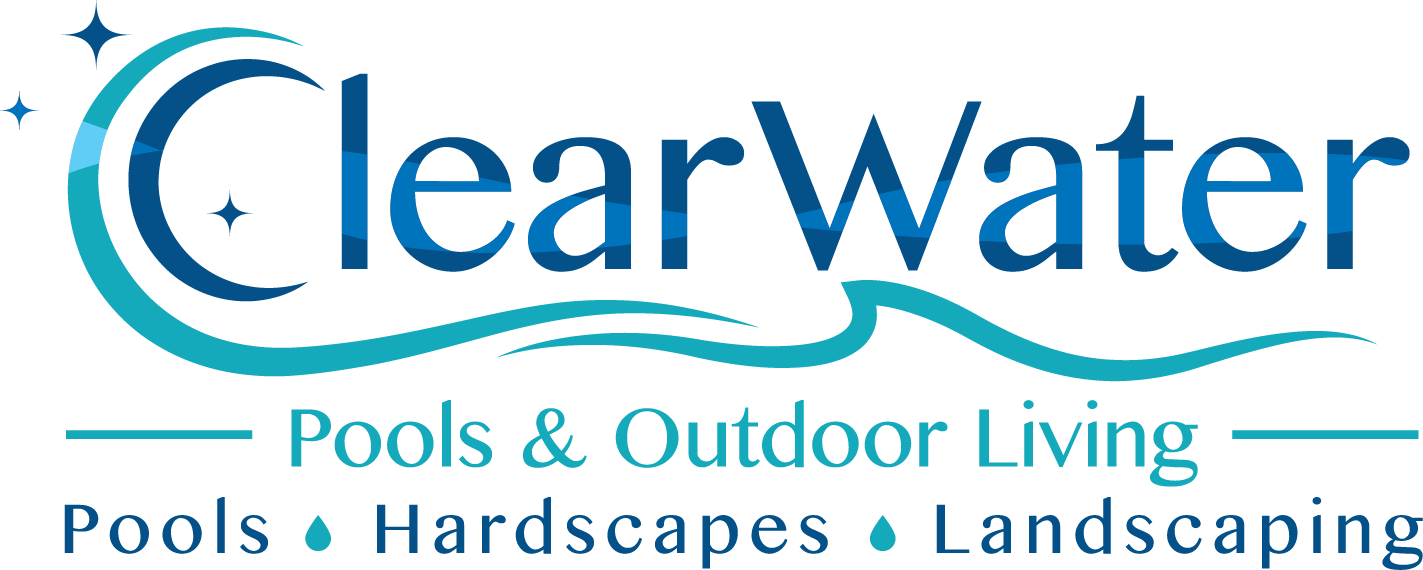Owning a pool in Cherokee County offers endless enjoyment, but it also comes with a critical responsibility to prioritize safety—and many homeowners unknowingly make common mistakes that can lead to accidents or liabilities. From inadequate fencing and improper drain covers to overlooking water chemistry and unsupervised swim time, these oversights can turn a backyard oasis into a hazardous environment. In this guide, we’ll highlight the most common pool safety mistakes observed in Cherokee County, explain the risks involved, and provide actionable steps you can take to ensure your pool remains a secure, fun, and compliant space for everyone.
The Most Common Pool Safety Mistakes Putting Families at Risk
What Are the Top Pool Supervision Mistakes That Increase Drowning Risks?
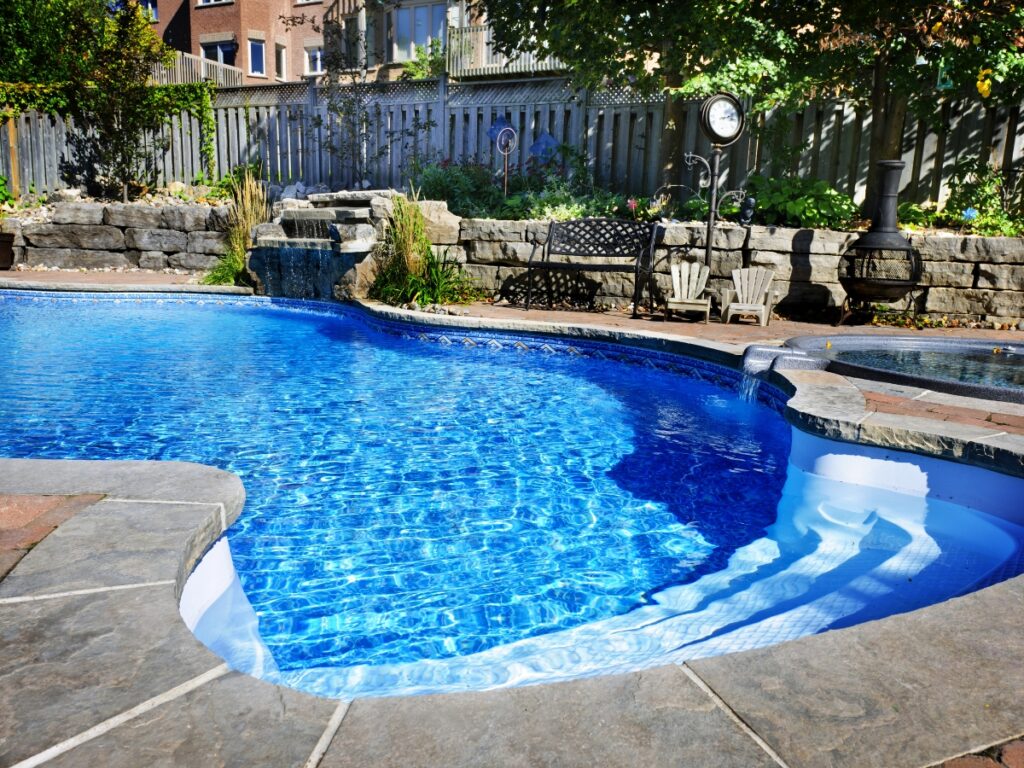
One of the most common pool safety mistakes homeowners make during gatherings is assuming that casual supervision is enough to keep swimmers safe. Distraction, even for a few seconds, can be the difference between prevention and tragedy. When adults divide their attention between cooking, phones, or socializing, they lose the ability to notice subtle signs of distress in the water. Active, dedicated supervision is essential for preventing accidents, especially during busy family events or holiday parties.
The key is to assign one responsible adult to watch the pool at all times. This person’s sole responsibility should be observing swimmers, listening for signs of trouble, and maintaining constant visual contact. Without this level of focus, even a strong swimmer can get into difficulty unnoticed. Rotating supervision duties every 15 to 30 minutes ensures consistent vigilance while preventing fatigue, making family gatherings both fun and safe.
What Is the “Water Watcher” Concept and Why Is It Important?
The “water watcher” concept provides a structured way to guarantee active supervision. It designates one adult to stay alert, free from distractions, for a set time period. This role involves no phone use, no alcohol, and no multitasking—just focused attention on the water. After the interval, another adult takes over, maintaining constant coverage throughout the event.
Using a visible signal, such as a badge or wristband, helps everyone know who the current watcher is. This system prevents assumptions that “someone else is watching” and establishes accountability. Training adults on what to look for, how to respond quickly, and where lifesaving equipment is stored further strengthens this approach. The goal is not just to react faster but to create a culture of prevention around pool use.
How Does Distraction Affect Adult Supervision Around Pools?
Distraction is one of the leading factors in residential pool incidents. Phones, conversations, and alcohol can all significantly impair awareness. Even glancing away for a moment can allow a swimmer to slip under the surface unnoticed. Alcohol, in particular, can slow reaction times and dull judgment, making it even harder to identify an emergency.
Establishing clear supervision rules helps reduce these risks. Designate phone-free areas near the pool and ensure that at least one adult remains sober and attentive. Visual tokens, like a “watcher” tag, can indicate who is on duty. Turning supervision into a shared, structured responsibility ensures that no moment goes uncovered, protecting everyone in the water.
Why Should Children Never Swim Alone in Residential Pools?
Children should never swim without a buddy or adult supervision, no matter how confident they are in the water. Even skilled young swimmers can panic, get cramps, or become disoriented. Having a buddy system ensures that someone is always nearby to call for help or assist if an emergency occurs.
For younger children, close proximity is crucial—adults should remain within arm’s reach. Older kids can have more independence but still require consistent observation and a swimming partner. Reinforcing simple rules like “no swimming alone” and practicing water safety drills regularly builds habits that can save lives. Ultimately, the best defense against drowning is active, uninterrupted supervision. By prioritizing attention, preparation, and clear roles, families can enjoy the water safely during any gathering or holiday season.
How Do Georgia and Cherokee County Pool Fence Laws Impact Safety Compliance?
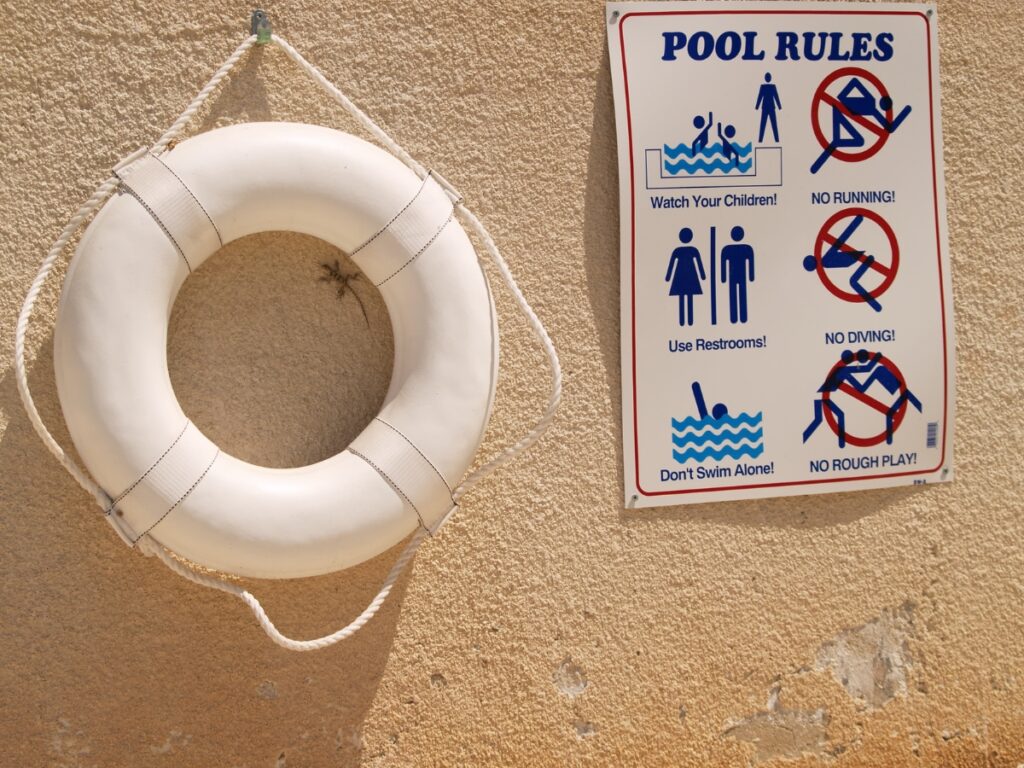
Physical barriers and properly functioning gates convert supervision and rules into passive, structural protection that prevents unsupervised access and reduces drowning incidents. Georgia law establishes baseline fence and gate parameters intended to deny easy pool entry by children, and Cherokee County homeowners will want to check local ordinances that may be more restrictive; complying with measured height, latch height, and self-closing hardware transforms a backyard pool into a controlled access area. Regular inspection of fence posts, gate alignment, and latch operation prevents common failures that otherwise compromise the barrier’s protective function. Below is a quick-reference table summarizing typical fence and gate requirements to help homeowners verify compliance and plan corrective work.
The following table summarizes typical state-level fence attributes and notes on Cherokee County variations. Use this as a starting point to verify your barrier against local requirements and inspection criteria.
| Barrier Component | Standard Requirement | Cherokee County Notes |
|---|---|---|
| Minimum Height | 48 inches (standard baseline) | Some localities enforce 54-inch effective height for certain installations (cherokeecountyga.gov) |
| Self-closing Gate | Required on pool-side gates | Ensure hinges are maintained for reliable operation (cherokeecountyga.gov) |
| Self-latching Mechanism | Latch above a child’s reach (usually top 54″) | Inspect latch height and shielded hardware to prevent tampering (cherokeecountyga.gov) |
| Permit/Inspection | Permits often required for new or altered barriers | Check county building department for local permit thresholds (cherokeecountyga.gov) |
What Are the Minimum Height and Gate Requirements for Pool Fences in Georgia?
Minimum fence height and gate operation requirements create the baseline physical separation that prevents unsupervised access and accidental drownings by young children. Georgia standards commonly require fences of approximately four feet or higher and gates equipped with self-closing and self-latching hardware, with latch placement high enough to be out of a small child’s reach; measurement guidelines specify top-of-fence to finished grade and latch height measured from the ground.
Homeowners will want to verify the effective height around steps and slopes, and be aware that some local jurisdictions may require taller fences or additional features like pressure-resistant materials. When in doubt, confirming with county code resources or engaging a professional will clarify exact measurements and ensure full compliance.
How Do Self-Closing and Self-Latching Gates Prevent Unsupervised Access?
Self-closing gates remove the human dependency of remembering to close a gate, while self-latching hardware ensures the barrier engages automatically after closing, significantly reducing accidental open-gate windows that permit child access. Mechanically, these components use springs and latch plates designed to return the gate to a closed position and lock it so a child can’t push through; however, wear, sagging posts, and corroded hardware are common failure modes.
Regular homeowner checks—opening and releasing gates to verify automatic return and testing latch engagement—identify repairs before they become safety hazards. If repetitive maintenance is needed, a professional installer can upgrade hardware, reinforce posts, and recommend materials that resist local climate factors to maintain function.
What Are the Best Practices for Securing Above-Ground Pools in Cherokee County?
Above-ground pools require targeted access controls because the raised entry point and removable ladders are common vulnerabilities that allow quick, unsupervised entry for children. Best practices include using ladder locks or removable ladders secured with padlocks, surrounding the pool with a compliant four-sided fence, and installing a self-closing gate on any access walkway to the pool.
Temporary or seasonal barriers should fully enclose the pool platform and be anchored to prevent removal by children; alarms on ladders and pool-surface sensors add redundancy for critical times. Combining ladder control with a perimeter barrier and active supervision provides layered protection suited to above-ground designs common in residential yards.
What Pool Maintenance Mistakes Compromise Safety and Water Quality?

Poor maintenance compromises both water quality and mechanical safety, producing conditions that increase illness, mask distress, and elevate equipment failure risks. Underdosing or failing to test sanitizer levels allows pathogens to grow; clogged filters and neglected pumps can cause suction hazards and entrapment, while improper chemical storage creates fire and poisoning risks.
A small, consistent maintenance schedule—routine testing, debris removal, and monthly equipment inspections—keeps water safe and equipment functioning, reducing emergency repairs and safety incidents. The table below provides a homeowner-friendly maintenance schedule linking tasks to recommended intervals and safety rationale.
The maintenance schedule below helps homeowners prioritize tasks that preserve safety and water quality without excessive complexity. Use it as a baseline; more frequent checks may be necessary during heavy use or extreme weather.
| Task | Recommended Frequency | Safety Rationale |
|---|---|---|
| Free chlorine / bromine test | Daily or before heavy use | Maintains pathogen control and clear visibility |
| pH and alkalinity check | 2–3 times per week | Prevents corrosive water and irritation to swimmers |
| Filter backwash / clean | Monthly (or per pressure rise) | Ensures proper circulation and reduces entrapment risk |
| Pump and skimmer inspection | Monthly | Detects worn seals, leaks, and suction hazards |
| Drain and cover inspection | Quarterly | Confirms entrapment-protective devices are intact |
| Chemical inventory & storage check | Monthly | Prevents dangerous mixing and accidental exposure |
How Often Should Pool Chemicals Be Tested and Balanced for Safety?
Regular chemical testing maintains sanitizer effectiveness and swimmer comfort, with key parameters including free chlorine, pH, and total alkalinity that collectively prevent pathogens, scale, and corrosion. For typical residential pools, a daily quick check of free chlorine and pH provides immediate safety assurance, while a more detailed balance of alkalinity and stabilizer levels should be done weekly or after heavy bather loads.
Homeowners can use test strips for daily screening and digital meters or professional testing for more precise adjustments; consistent records help spot issues before they become health hazards. When readings are outside recommended ranges or when persistent imbalance occurs, contacting a professional maintenance service for a corrective plan is a practical next step.
What Are the Risks of Neglecting Regular Pool Cleaning and Equipment Checks?
Skipping routine cleaning and equipment inspections accelerates algae and bacterial growth, clogs filtration, and hides mechanical wear that eventually leads to sudden failures and safety hazards. Algae blooms reduce water clarity and can mask a swimmer in distress, while failing pumps or broken skimmer lids can create suction points that pose entrapment risks; debris buildup also stresses filtration leading to overheating and electrical faults.
Simple homeowner checks—clearing visible debris, monitoring pump sound and pressure gauges, and ensuring covers and drains are secure—catch many issues early. When inspections reveal anything beyond basic cleaning, a professional assessment prevents escalation and restores system safety and reliability.
How Should Pool Chemicals Be Safely Stored and Handled at Home?
Safe chemical storage isolates oxidizers and acids in a dry, ventilated, locked area away from direct sunlight and combustible materials, with original labels retained for emergency guidance and proper PPE available for handling. Never mix products or add water directly to chemicals; always add chemicals to water per manufacturer directions and use dedicated scoops to avoid cross-contamination.
Keep an up-to-date inventory and a clear spill-response plan, including rinsing procedures and emergency contact numbers, and ensure children can’t access the storage area. Following these practices reduces poisoning, fire, and chemical-reaction risks while preserving the effectiveness of treatment products.
How Can Homeowners Effectively Teach Water Safety Skills to Prevent Accidents?
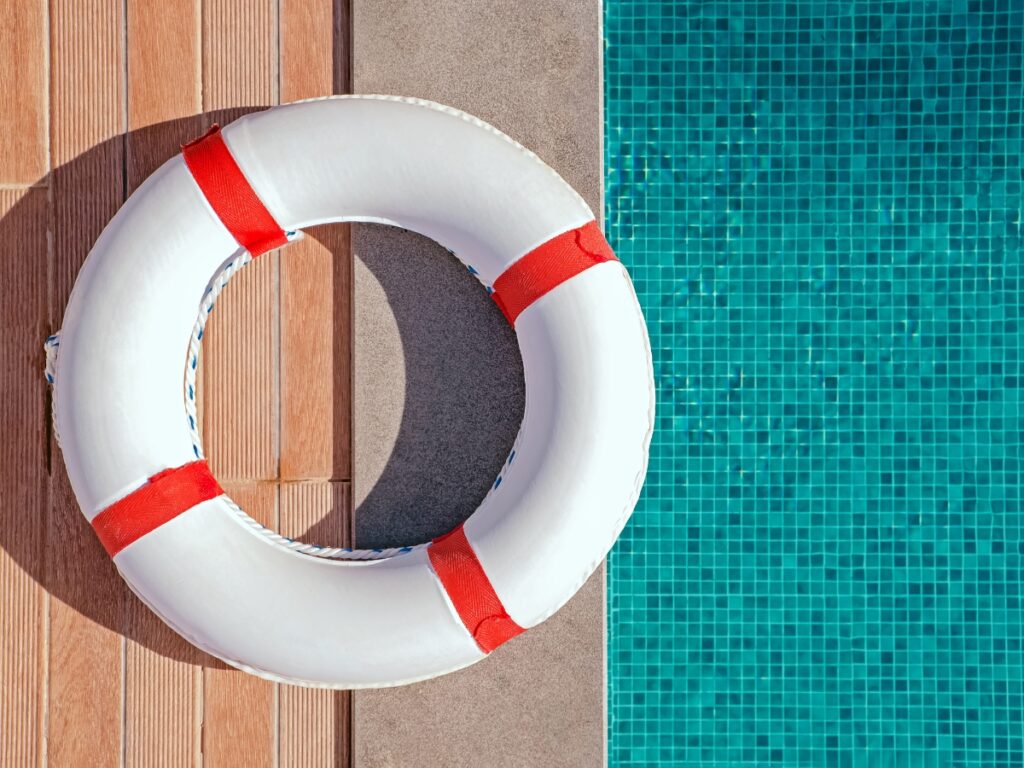
Teaching water safety starts with repetition, structure, and consistency. Children and adults alike should learn not just swimming techniques but situational awareness and calm response under stress. Formal swim lessons build vital survival skills such as floating, treading water, and safely reaching the pool edge. These abilities greatly reduce drowning risks because they help swimmers maintain control and signal for help if needed.
Research consistently shows that structured, skill-based lessons significantly lower the risk of drowning, especially when paired with adult supervision and physical barriers. The key is progression: lessons should start with basic comfort in the water and gradually move toward independent swimming and safety drills. Parents should look for programs that emphasize safety and repetition rather than just recreational play. Embedding water safety education into the family routine reinforces good habits and keeps everyone better prepared in and around the pool.
How Does CPR and First Aid Training Improve Pool Safety Preparedness?
Even with strong safety measures, emergencies can happen, and immediate response often determines outcomes. CPR and first aid training prepare homeowners and caregivers to act quickly and effectively in those crucial first minutes after an accident. Learning these skills ensures that someone on-site can assess the situation, perform chest compressions, deliver rescue breaths, and stabilize a swimmer until professional help arrives.
Practicing emergency drills as a family builds confidence and reduces hesitation during real situations. Adults who frequently supervise swimming sessions should refresh their training at least once a year to stay sharp on proper technique and current guidelines. Including CPR and first aid in your broader water safety plan creates an additional layer of protection that can make all the difference in a crisis.
What Pool Rules Should Parents Teach Children for Safe Swimming?
Establishing and enforcing clear household pool rules is one of the most effective ways to prevent accidents. Children thrive on structure, and when expectations are consistent, safe behaviors become second nature. Rules should be simple, specific, and easy to remember, such as always asking an adult for permission before swimming, using the buddy system, avoiding running on the pool deck, and never diving in shallow water.
Parents can reinforce these rules through regular reminders and positive reinforcement. Role-playing scenarios, like how to react if a friend struggles in the water, helps children understand not just what to do but why the rules matter. Over time, these lessons turn into automatic habits that protect them even when adults aren’t right beside them.
Creating a Culture of Pool Safety
Preventing accidents requires more than supervision alone—it’s about creating a household culture where safety is instinctive. By combining formal swim training, CPR readiness, and clear family rules, homeowners can dramatically reduce the risk of drowning and other pool-related injuries. Avoiding the most common pool safety mistakes starts with preparation, communication, and consistency, ensuring every swim session remains safe and enjoyable for everyone.
What Are the Overlooked Pool Hazards That Homeowners Commonly Miss?
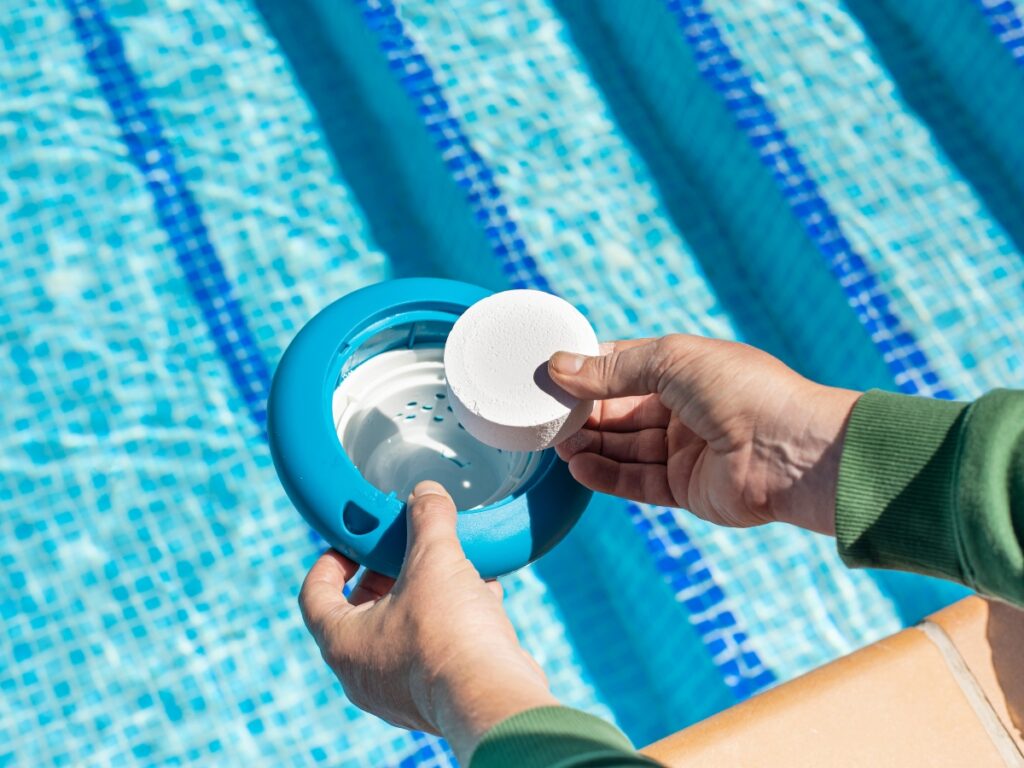
While most homeowners focus on supervision and basic cleaning, several hidden hazards around pools often go unnoticed. Issues like suction entrapment, electrical faults, and slippery decks can turn a simple day of swimming into a serious emergency. These risks often develop slowly over time, especially when maintenance tasks are delayed or safety devices wear down.
Inspecting pool systems regularly is key to catching these problems early. Suction outlets, lighting, and deck conditions should all be reviewed at least once a month. Taking preventive measures not only reduces accidents but also extends the lifespan of your pool area. Awareness of these commonly missed hazards can help homeowners avoid some of the most common pool safety mistakes before they cause harm.
How Can Drain Entrapment Be Prevented in Residential Pools?
Drain entrapment is one of the most dangerous but preventable pool hazards. It happens when a swimmer’s hair, clothing, or body becomes trapped by the suction force of a faulty or uncovered drain. To prevent this, make sure every pool drain has a secure, compliant cover designed to meet current safety standards. Homeowners should inspect covers regularly for cracks, missing screws, or loose fittings, replacing them immediately if any damage is found.
Pools built with a single main drain present higher risks and should be upgraded with dual-drain systems or unblockable covers. These setups balance water flow and minimize suction strength, drastically reducing the chance of entrapment. Consistent inspection and prompt maintenance remain the most reliable defenses against this silent hazard.
What Electrical Safety Measures Are Necessary Around Pools?
Electrical safety is another critical factor that often gets overlooked. All pool-related electrical equipment should be protected by ground fault circuit interrupters (GFCIs) to prevent electric shock. Wiring and metal fixtures near the pool must be properly bonded and grounded, and any outlets or lighting should be rated for wet environments.
Warning signs like frequent breaker trips, flickering lights, or tingling sensations in the water require immediate attention. If these occur, stop using the pool until a qualified electrician verifies the system’s safety. Regular professional inspections help ensure compliance with electrical codes and reduce the risk of shock-related injuries, one of the most common pool safety mistakes made by homeowners.
How Do Slippery Decks and Clutter Increase Poolside Accident Risks?
Slippery decks and cluttered walkways are responsible for many poolside falls and injuries each year. Wet surfaces, algae buildup, and standing water all contribute to reduced traction, especially on smooth concrete or tile. Applying non-slip coatings or using textured materials can significantly improve safety. Keeping the area clear of toys, hoses, and furniture ensures unobstructed movement around the pool.
Proper drainage also helps by minimizing puddles that create slick spots. Performing weekly checks for uneven surfaces, cracks, or loose pavers further prevents tripping hazards. Maintaining a clean, well-organized deck area not only reduces falls but also supports a safer overall pool environment for everyone.
Which Advanced Pool Safety Equipment Options Enhance Protection in Cherokee County?
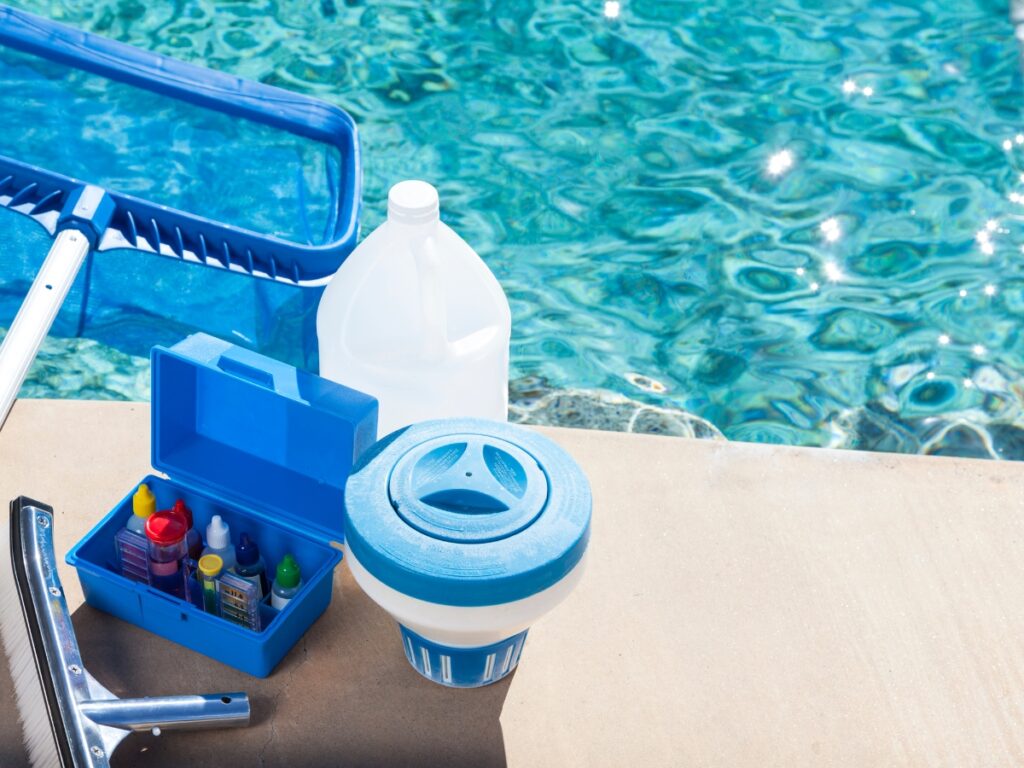
Advanced devices—such as surface and gate alarms, automatic covers, compliant drain covers, and smart sensors—add passive and active detection layers that complement, but don’t replace, supervision and barriers. Each device serves a specific primary safety function: alarms alert caregivers to unintended access, covers provide a physical barrier when the pool isn’t in use, and smart sensors integrate detection into home systems for remote monitoring. Cost, installation complexity, and maintenance requirements vary, so evaluating devices against household risk profiles helps homeowners choose effective combinations. The table below compares common options to guide budgeting and selection.
The following comparison table helps homeowners weigh safety function, cost range, and installation notes for common advanced safety devices.
| Device | Primary Safety Function | Typical Cost Range | Installation Notes |
|---|---|---|---|
| Surface alarm | Detects waves or surface disturbances | $100–$400 | DIY installation; periodic sensitivity calibration |
| Gate alarm | Alerts when perimeter gate opens | $50–$250 | Mount at gate; battery checks required |
| Automatic pool cover | Prevents access when closed | $3,000–$12,000+ | Professional installation; must fit pool shape |
| Compliant drain cover | Prevents suction entrapment | $150–$500 | Must meet safety standards; pro install recommended |
| Smart sensor systems | Remote alerts, integration with apps | $200–$1,200+ | May require subscription; verify connectivity |
How Do Pool Alarms and Covers Add Layers of Safety?
Alarms and covers function as secondary defenses that alert caregivers or physically block access when supervision lapses or the pool is unused, reducing the likelihood of unsupervised entry. Alarms provide notification—useful during parties or when the primary water watcher is momentarily distracted—while automatic or solid covers create a barrier that prevents access from the surface when engaged. Each device has limitations: alarms can be ignored or malfunction, and covers require correct installation and weight rating; therefore, they must be used in combination with compliant fencing and active supervision. Regular maintenance—battery replacement for alarms and mechanical checks for covers—ensures these layers remain reliable.
What Are the Benefits and Costs of Installing Smart Pool Safety Devices?
Smart devices offer remote monitoring and notification capabilities that extend human supervision by delivering immediate alerts to caregivers’ phones or home systems, enabling faster response when an alarm triggers. Higher-end systems often include multi-sensor arrays, integration with smart home platforms, and subscription services that improve situational awareness but add recurring costs. The cost-benefit analysis favors smart systems in situations where homeowners can’t be continuously present or where multi-property oversight is needed; for typical families, combining basic alarms with robust fencing and maintenance provides high safety value at lower cost. When selecting smart solutions, evaluate ongoing subscription fees, warranty coverage, and local installer support.
How Does Professional Installation Ensure Safety Compliance?
Professional installers validate that devices are correctly integrated with existing barriers, mounted to manufacturer specifications, and adjusted to local site conditions, reducing misalignment, false alarms, and compliance gaps. Professionals also handle necessary permits for structural alterations, verify hardware meets recognized standards, and provide warranty-backed workmanship that reduces the risk of long-term failure. Homeowners benefit from documented installations that simplify future inspections and resale disclosures, and regular service plans keep equipment calibrated and reliable. For complex systems—automatic covers, wired gate hardware, and smart integrations—professional installation is a pragmatic way to secure both immediate safety and long-term function.
How Can Professional Pool Maintenance Services Help Avoid Common Safety Mistakes?

Professional maintenance services provide systematic safety checks, proactive preventive repairs, and documentation that together prevent many mistakes homeowners might miss between seasonal inspections. Experts perform chemical balancing, equipment diagnostics, barrier and gate checks, and entrapment-device inspections, and they translate findings into prioritized action plans for homeowners to implement. Scheduled maintenance reduces unexpected failures, preserves water quality, and frees homeowners to focus on supervision and training rather than technical troubleshooting.
What Safety Checks Are Included in Expert Pool Maintenance?
A professional safety check typically includes a chemical balance and clarity assessment, pump and filter performance testing, inspection of drain covers and skimmer integrity, and evaluation of barrier and gate hardware for reliable operation. Technicians document findings, recommend actions, and can replace or adjust worn components within the scope of service to restore safe operation quickly. Additional checks may include electrical system spot checks for GFCI protection and verifying that automatic covers and alarms function as intended. Regular documentation from these visits creates a service history that highlights trends and prevents small issues from developing into hazards.
How Does Regular Maintenance Extend Pool Longevity and Safety?
Consistent maintenance prevents accelerated wear on pumps, filters, and liners by addressing corrosive water chemistry and mechanical stress before failure occurs, which both reduces repair costs and helps eliminate sudden safety hazards. For example, proactive filter cleaning prevents inefficient circulation that can create dangerous suction anomalies, and scheduled equipment inspections identify leaks and electrical wear that could otherwise lead to hazardous failures. A predictable service schedule spreads costs and lowers downtime, making pools safer and more enjoyable year-round. Homeowners who invest in a maintenance plan benefit from both safer pools and reduced long-term capital expenses.
How Can Homeowners Schedule a Safety Consultation with Clear Water Pools?
To schedule a safety consultation, prepare basic information—pool type, age, recent maintenance history, and photos of fences, gates, and equipment—so our technician can provide an efficient, targeted assessment during the visit. Clear Water Pools offers safety consultations and maintenance packages designed for Metro Atlanta homeowners, and their team can perform barrier compliance checks, equipment diagnostics, and recommend prioritized repairs or upgrades. During a consultation, you can expect a documented checklist of findings, an implementation plan, and optional recurring service proposals to maintain safety over time. For homeowners seeking reassurance, a professional assessment turns uncertainty into a clear action plan that preserves both safety and pool value.
What a typical safety consultation includes:
- On-site inspection of barriers, gates, covers, and visible equipment.
- Chemical and water-clarity assessment with immediate corrective recommendations.
- Written report outlining prioritized repairs and maintenance plan options.
These steps make the consultation a practical investment in preventing the most common safety mistakes and ensuring long-term compliance and peace of mind.
Frequently Asked Questions

What are the signs that my pool needs professional maintenance?
Signs that your pool may require professional maintenance include persistent water clarity issues, unusual odors, or visible algae growth. Additionally, if you notice equipment malfunctions, such as a pump that is making strange noises or a filter that is not functioning properly, it’s a good time to call in a professional. Regularly checking chemical levels and noticing significant fluctuations can also indicate that your pool needs expert attention. Addressing these issues promptly can prevent more serious problems and ensure a safe swimming environment.
How can I teach my children about water safety effectively?
Teaching children about water safety involves a combination of education, practice, and reinforcement. Start by explaining the importance of swimming with a buddy and never entering the pool without adult supervision. Enroll them in swim lessons that focus on survival skills, such as floating and treading water. Role-playing scenarios can help them understand what to do in an emergency. Consistently reviewing pool rules and practicing them during swim time reinforces safe behaviors, making them second nature. Positive reinforcement for following safety rules can also encourage compliance.
What should I do if I suspect a drain entrapment hazard?
If you suspect a drain entrapment hazard, immediately restrict access to the pool and inspect the drain covers for compliance with safety standards. Ensure that all drain covers are intact and securely fastened. If you find any cracks or signs of wear, replace them promptly. Consider installing anti-entrapment devices or dual-drain systems to enhance safety. We advise consulting a professional pool service to assess the situation and implement necessary safety measures to prevent potential accidents.
How can I ensure my pool area is safe for children during gatherings?
To ensure your pool area is safe for children during gatherings, establish clear supervision protocols. Assign a dedicated water watcher who is responsible for monitoring swimmers without distractions. Use physical barriers, such as compliant fences and self-closing gates, to restrict access when the pool isn’t in use. Additionally, set clear rules for poolside behavior, such as no running or rough play. Regularly inspect the area for hazards, and keep the deck clear of toys and furniture to prevent tripping accidents.
What are the benefits of installing pool safety alarms?
Installing pool safety alarms provides an additional layer of protection by alerting caregivers to unauthorized access or disturbances in the water. These alarms can detect waves or movements, notifying you immediately if someone enters the pool unexpectedly. This is particularly useful during gatherings when supervision may be divided. Safety alarms can help prevent accidents by ensuring that caregivers are alerted to potential dangers, allowing for a quicker response in emergencies. Regular maintenance of these alarms is essential to ensure their reliability.
How often should I conduct safety checks on my pool equipment?
Safety checks on pool equipment should be performed at least once a month, with more frequent inspections during peak usage times, such as summer. Regularly check the functionality of pumps, filters, and safety devices like drain covers and alarms. Inspect for any signs of wear, leaks, or corrosion, and ensure that all safety features are operational. Keeping a maintenance log can help track inspections and repairs, ensuring that your pool remains safe and compliant with local regulations.
What should I include in a pool safety plan for my family?
A comprehensive pool safety plan for your family should include clear rules for pool use, designated adult supervision roles, and emergency procedures. Outline specific behaviors that aren’t allowed, such as running or diving in shallow areas. Include a buddy system for children and regular practice of water safety skills. Ensure that all family members know how to perform CPR and first aid. Regularly review and practice the plan, making adjustments as necessary to accommodate new family members or changes in pool use.
Conclusion
Avoiding the most common pool safety mistakes is the most important step you can take to protect your family and guests in your Cherokee County backyard. From proper fencing and gate latches to consistent water chemistry management, proactive measures create a secure environment for everyone. At Clear Water Pools Atlanta, we help homeowners design, install, and maintain pools that prioritize both fun and safety. Don’t compromise on peace of mind—call 770-406-8638 or request your free pool estimate today to build a pool that’s as safe as it is beautiful.
